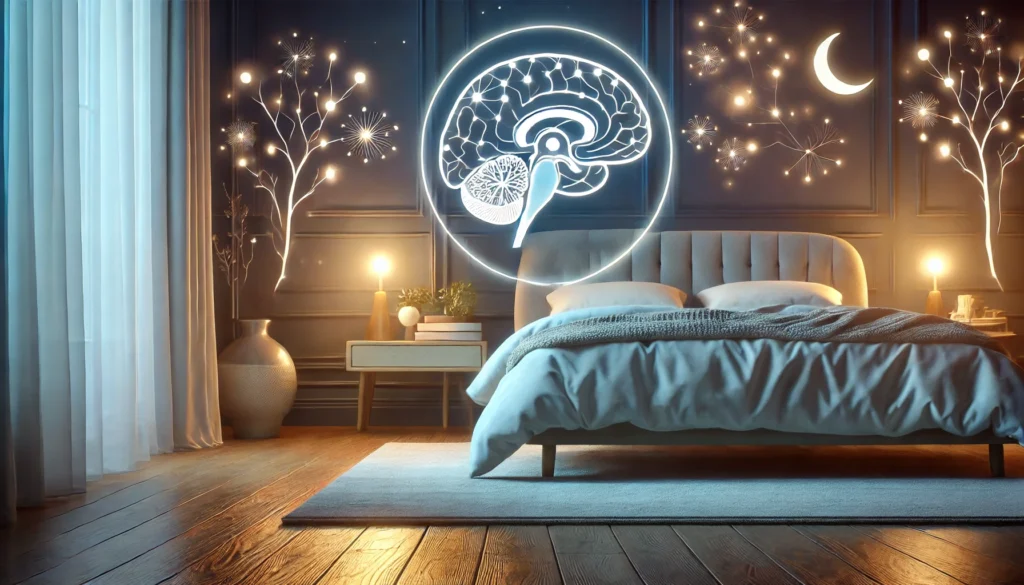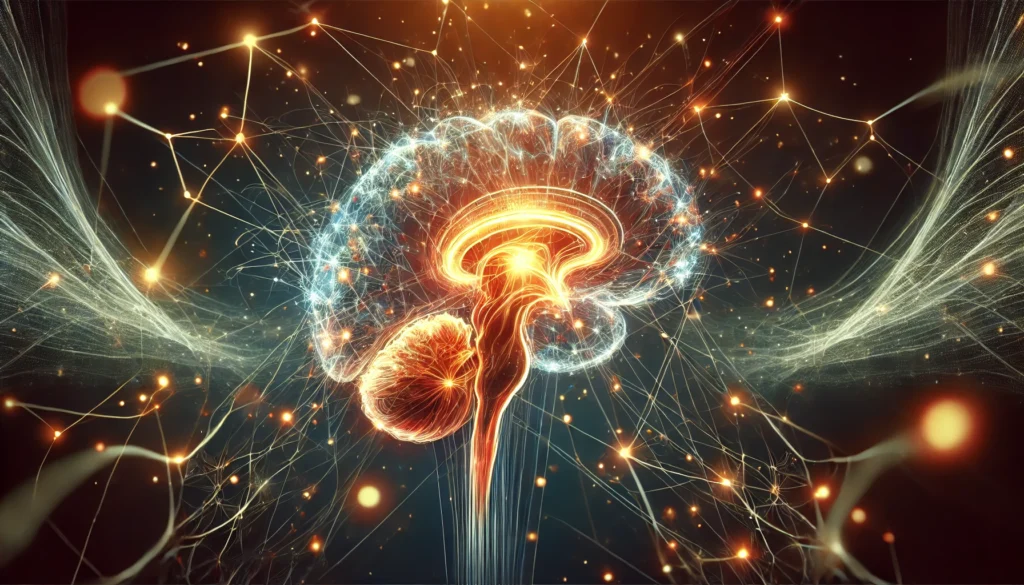Sleep is a fundamental pillar of human health, yet its mechanisms remain a fascinating frontier of scientific exploration. At the heart of sleep regulation lies the hypothalamus, a small yet crucial structure within the brain. Understanding its role not only illuminates how sleep functions but also provides actionable insights for enhancing focus, productivity, and overall well-being. When exploring the question, “How is the hypothalamus involved in sleep?” we uncover the profound connection between this brain region, the body’s circadian rhythms, and sleep-wake cycles. Through its influence on key processes like homeostasis, hormonal regulation, and neural signaling, the hypothalamus is a central player in ensuring restorative sleep and cognitive optimization.
This article delves into the intricate relationships between the hypothalamus, sleep regulation, and brain health. We explore the neuroscience behind the hypothalamus and its interactions with other brain regions, focusing on its role in producing and controlling sleep-inducing hormones, maintaining homeostasis, and responding to environmental cues. By understanding these processes, we gain tools to improve sleep quality, mental clarity, and focus—essential components for thriving in a demanding world.
You May Also Like: Why Do We Sleep? Exploring the Importance of Rest for Optimal Focus and Performance
Understanding the Hypothalamus: Anatomy and Function
The hypothalamus is a small but vital structure located at the base of the brain, nestled below the thalamus and near the pituitary gland. Despite its size, the hypothalamus orchestrates numerous critical functions, acting as the brain’s command center for homeostasis—the regulation of internal balance.
Hypothalamus and Homeostasis
Homeostasis involves the regulation of various bodily systems, including temperature control, hunger, thirst, and hormone secretion. The hypothalamus achieves this by integrating information from the body and environment, then signaling to other systems to adjust as needed. For instance, when body temperature deviates, the hypothalamus initiates mechanisms to restore balance, such as inducing sweating or shivering. Similarly, it governs hormone release from the pituitary gland, influencing processes like growth, reproduction, and stress responses.
Hypothalamus and Circadian Rhythms
A critical function of the hypothalamus is regulating circadian rhythms—the natural 24-hour cycles that govern sleep-wake patterns. The suprachiasmatic nucleus (SCN), a cluster of cells within the hypothalamus, acts as the brain’s master clock. It receives light signals from the retina, synchronizing the body’s internal clock with external day-night cycles. This synchronization influences the timing of sleep and wakefulness, hormone release, and metabolic activities.
The Role of the Hypothalamus in Sleep Regulation
The Suprachiasmatic Nucleus (SCN): Master Clock
The SCN is pivotal in maintaining the body’s circadian rhythm. Light exposure during the day activates the SCN, suppressing melatonin production and promoting wakefulness. Conversely, reduced light at night triggers the SCN to signal the pineal gland to release melatonin, a hormone that induces sleep. This process illustrates how the hypothalamus and sleep regulation are intricately linked.
Studies highlight the SCN’s influence on various physiological systems. Disruptions to its functioning, such as those caused by jet lag or shift work, can lead to circadian misalignment, negatively impacting sleep quality and cognitive performance.
Melatonin and Sleep Initiation
Melatonin is a key hormone regulated by the hypothalamus that facilitates sleep onset. Its secretion rises in response to darkness and diminishes with light exposure. By modulating melatonin levels, the hypothalamus ensures alignment between the internal clock and external cues. The importance of melatonin in regulating sleep cycles underscores why maintaining consistent light exposure patterns is essential for optimal rest.
Orexin and Wakefulness
While the hypothalamus promotes sleep, it also plays a critical role in sustaining wakefulness through the release of orexin (also known as hypocretin). This neuropeptide is produced in the lateral hypothalamus and stimulates arousal, appetite, and alertness. Dysregulation of orexin pathways has been linked to sleep disorders such as narcolepsy, characterized by excessive daytime sleepiness and sudden loss of muscle tone.

Neural Pathways and Interactions
The hypothalamus interacts with other brain regions to coordinate sleep and wakefulness. These neural networks include:
Reticular Activating System (RAS)
The RAS, located in the brainstem, is responsible for promoting wakefulness and arousal. It receives input from the hypothalamus to modulate alertness levels. During sleep, the hypothalamus inhibits the RAS to facilitate the transition into restorative states.
Ventrolateral Preoptic Nucleus (VLPO)
The VLPO, a group of neurons within the hypothalamus, plays a key role in initiating and maintaining sleep. It inhibits arousal-promoting systems during sleep onset, effectively acting as a switch that transitions the brain from wakefulness to sleep. Dysfunctions in this pathway can contribute to insomnia and fragmented sleep patterns.
Interplay Between Neural Systems
The hypothalamus does not act in isolation; rather, it coordinates with other systems to maintain a delicate balance between sleep and wakefulness. These interactions highlight the complexity of sleep regulation and the importance of the hypothalamus in orchestrating these processes.
Sleep Stages and Hypothalamic Control
Non-Rapid Eye Movement (NREM) Sleep
NREM sleep comprises three stages, with each progressively deeper and more restorative. The hypothalamus facilitates NREM sleep by suppressing arousal systems and promoting parasympathetic activity, leading to lowered heart rate, blood pressure, and brain activity.
Rapid Eye Movement (REM) Sleep
REM sleep is characterized by vivid dreams, increased brain activity, and muscle atonia. The hypothalamus modulates transitions between REM and NREM sleep, ensuring a balanced sleep architecture essential for cognitive restoration and memory consolidation.
Hypothalamic Dysregulation and Sleep Disorders
Insomnia
Insomnia often stems from hyperactivity in arousal-promoting pathways or deficiencies in sleep-inducing mechanisms. The hypothalamus’ role in regulating these systems makes it a focal point for understanding and treating insomnia.
Narcolepsy
Narcolepsy is associated with orexin deficiency, impairing the hypothalamus’ ability to sustain wakefulness. This condition underscores the importance of balanced hypothalamic functioning in maintaining healthy sleep-wake cycles.
Circadian Rhythm Disorders
Disruptions in the SCN’s ability to synchronize with environmental cues can result in circadian rhythm disorders, such as delayed sleep phase syndrome. These disorders often require interventions targeting the hypothalamus to restore alignment.
Optimizing Sleep Through Hypothalamic Support
Understanding the hypothalamus’ role in sleep regulation provides strategies for improving sleep quality and focus:
Light Exposure
Consistent light exposure during the day and minimizing blue light at night can enhance hypothalamic signaling and melatonin production.
Sleep Hygiene
Establishing regular sleep-wake schedules supports the hypothalamus in maintaining circadian rhythm consistency. Practices like creating a dark, quiet sleep environment and avoiding stimulants before bedtime are beneficial.
Stress Management
Chronic stress disrupts hypothalamic regulation of sleep by elevating cortisol levels. Mindfulness practices, exercise, and relaxation techniques can mitigate these effects.

Conclusion: Unlocking the Hypothalamus for Better Sleep and Focus
The hypothalamus is a cornerstone of sleep regulation, influencing every facet of the sleep-wake cycle. By understanding how the hypothalamus is involved in sleep, we can make informed choices to optimize rest, enhance cognitive performance, and achieve greater focus in daily life. This intricate brain region, through its orchestration of hormones like melatonin and orexin and its integration of environmental cues, is central to maintaining the balance between wakefulness and restorative sleep.
For individuals seeking to improve productivity and focus, prioritizing sleep hygiene, managing stress, and maintaining consistent light exposure are key strategies. As research continues to unravel the complexities of the hypothalamus and sleep regulation, it paves the way for innovative therapies and interventions. By harnessing the power of the hypothalamus, we unlock the potential for healthier, more focused, and more fulfilling lives.
Further Reading:
Global Health Action: Comparing performance of methods used to identify pregnant women, pregnancy outcomes, and child mortality in the Iganga-Mayuge Health and Demographic Surveillance Site, Uganda
Springer Open: The neurophysiologic basis of the human sleep–wake cycle and the physiopathology of the circadian clock: a narrative review
PLOS Biology: Slow-wave sleep drives sleep-dependent renormalization of synaptic AMPA receptor levels in the hypothalamus
National Institution of Neurological Disorders and Stroke: Brain Basics: Understanding Sleep
Important Note: The information contained in this article is for general informational purposes only, and should not be construed as health or medical advice, nor is it intended to diagnose, prevent, treat, or cure any disease or health condition. Before embarking on any diet, fitness regimen, or program of nutritional supplementation, it is advisable to consult your healthcare professional in order to determine its safety and probable efficacy in terms of your individual state of health.
Regarding Nutritional Supplements Or Other Non-Prescription Health Products: If any nutritional supplements or other non-prescription health products are mentioned in the foregoing article, any claims or statements made about them have not been evaluated by the U.S. Food and Drug Administration, and such nutritional supplements or other health products are not intended to diagnose, treat, cure, or prevent any disease.


